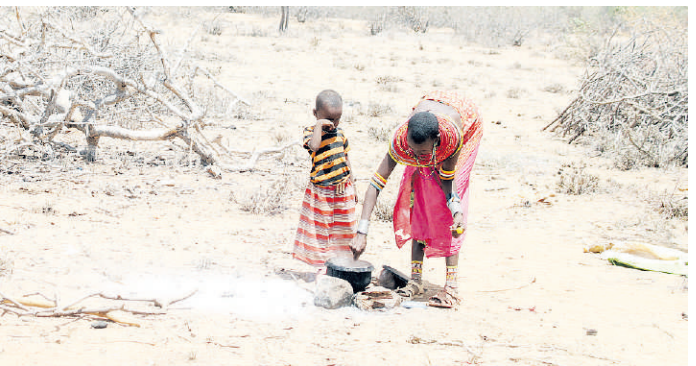
Top 10 food crisis countries hosting the most IDPs
Based on 2023–2024 internal displacement data
The crisis is fueled by conflict, erratic weather patterns, and the ongoing lean season.
In Summary

Audio By Vocalize

East Africa is experiencing worsening food insecurity from June to September 2025.
The June 2025 Food Security
Monitor report by Agra says conflict, erratic weather patterns, and the ongoing lean season fuel the crisis.
The region is also grappling with high food prices, rising demand and disrupted agriculture, leaving millions at risk of hunger.
In Kenya, food security conditions vary. Southern regions have benefited from good rains, improving food access. However, the North and East have experienced flooding and insecurity, which have displaced communities and disrupted farming. In Central Kenya, irregular rainfall has led to poor harvests and reduced incomes for smallholder farmers.
The Food Security Monitor report shows that across East Africa, food prices have continued to rise due to ongoing conflicts, unstable economies, seasonal shifts and weakening currencies.
“Food prices remain high across the region, particularly in Kenya, South Sudan, and Uganda, due to structural and economic pressures,” the report states.
Since October 2024, the number of people facing hunger has remained high across five East African countries. Compared to the same time last year, the number has risen by 12.3 million people.
“Uganda has seen the sharpest increase, from eight million in June 2024 to 18 million in June 2025, a 125 per cent rise. Rwanda follows with a 38.5 per cent increase, and South Sudan with 36.1 per cent. However, the situation in Kenya and Tanzania has remained largely unchanged year-on-year,” the report shows.
Food commodity prices continued to rise across East Africa amid regional demand and supply pressures.
Kenya and Uganda have experienced sustained increases in maize prices over the past year, with Kenya recording price increases ranging from 3.15 per cent to 36.27 per cent, and Uganda from 14.41 per cent to 41.51 per cent. “These fluctuations reflect ongoing macroeconomic challenges and depletion of maize stocks, largely driven by growing demand across the region,” said the report.
“After an 8.39 per cent drop in May, Kenya’s maize prices
rebounded sharply, rising 7.3 per cent month-on-month in June to Sh163,930 per
metric ton, making it the highest in the region.”
For beans, Kenya saw a 1.7 per cent month-on-month decline, settling at Sh188,890 per metric ton, though this remains the highest bean price in the region driven by robust domestic consumption and cross-border demand.
Yellow bean prices declined slightly in the past month across Rwanda, Tanzania, and Kenya by 6.24, 0.93, and 1.53 per cent respectively. These declines are largely attributed to seasonal availability during the green harvest season. However, prices for Kenya's red beans continue to climb, posting consistent increases over the past one to 12 months.
The report also notes that wheat prices in Kenya dropped by five per cent, settling at Sh100,620 per metric ton, mainly due to declining global prices driven by bumper harvests in the Black Sea region and increased exports from Russia.

Based on 2023–2024 internal displacement data

Jordan leads the list with 3.1 million refugees.

Currently, over 820 million people worldwide experience hunger and food insecurity.